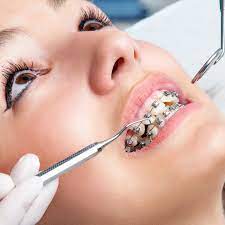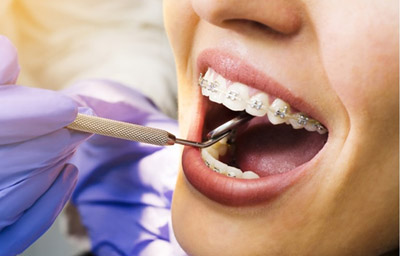A Biased View of Causey Orthodontics
Table of ContentsThe 20-Second Trick For Causey OrthodonticsAll about Causey OrthodonticsCausey Orthodontics for DummiesThe Best Strategy To Use For Causey OrthodonticsThe 4-Minute Rule for Causey Orthodontics
Neglecting occlusal partnerships, it was common to eliminate teeth for a range of dental issues, such as malalignment or congestion. The principle of an undamaged dentition was not commonly appreciated in those days, making bite relationships appear unimportant. In the late 1800s, the concept of occlusion was important for developing trusted prosthetic substitute teeth.As these principles of prosthetic occlusion progressed, it became an invaluable tool for dentistry. It remained in 1890 that the work and effect of Dr. Edwards H. Angle began to be felt, with his contribution to contemporary orthodontics specifically significant. At first concentrated on prosthodontics, he taught in Pennsylvania and Minnesota before guiding his focus in the direction of dental occlusion and the therapies required to maintain it as a normal condition, hence ending up being referred to as the "daddy of contemporary orthodontics".

The principle of excellent occlusion, as proposed by Angle and included into a classification system, made it possible for a change in the direction of dealing with malocclusion, which is any type of discrepancy from typical occlusion. Having a full set of teeth on both arcs was very searched for in orthodontic therapy due to the demand for precise relationships between them.
Causey Orthodontics Can Be Fun For Anyone
As occlusion became the crucial concern, face proportions and aesthetics were disregarded - best orthodontist near me. To achieve suitable occlusals without making use of exterior pressures, Angle proposed that having excellent occlusion was the most effective method to gain optimal face aesthetic appeals. With the passing away of time, it ended up being fairly noticeable that also a phenomenal occlusion was not suitable when thought about from an aesthetic point of view
Charles Tweed in America and Raymond Begg in Australia (that both examined under Angle) re-introduced dental care extraction into orthodontics during the 1940s and 1950s so they might boost facial esthetics while likewise making certain better stability concerning occlusal connections. In the postwar period, cephalometric radiography begun to be used by orthodontists for determining changes in tooth and jaw setting triggered by development and therapy. It ended up being apparent that orthodontic treatment can change mandibular advancement, bring about the formation of practical jaw orthopedics in Europe and extraoral pressure steps in the United States. Nowadays, both practical home appliances and extraoral tools are used around the world with the aim of amending growth patterns and types. Consequently, seeking true, or at the very least boosted, jaw connections had actually become the main objective of therapy by the mid-20th century.
The Definitive Guide to Causey Orthodontics
 The American Journal of Orthodontics was produced for this objective in 1915; prior to it, there were no scientific goals to adhere to, nor any kind of accurate classification system and braces that did not have attributes. Up until the mid-1970s, braces were made by wrapping metal around each tooth. With developments in adhesives, it became feasible to rather bond metal braces to the teeth.
The American Journal of Orthodontics was produced for this objective in 1915; prior to it, there were no scientific goals to adhere to, nor any kind of accurate classification system and braces that did not have attributes. Up until the mid-1970s, braces were made by wrapping metal around each tooth. With developments in adhesives, it became feasible to rather bond metal braces to the teeth.This has had purposeful impacts on orthodontic therapies that are provided regularly, and these are: 1. Right interarchal connections 2. Correct crown angulation (pointer) 3.
The advantage of the design hinges on its bracket and archwire combination, which needs just marginal wire bending from the orthodontist or medical professional (best orthodontist). It's appropriately called hereafter feature: the angle of the port and thickness of the brace base ultimately determine where each tooth is situated with little demand for extra adjustment
The Best Guide To Causey Orthodontics
Both of these systems used identical braces for each tooth and demanded the bending of an archwire in three aircrafts for situating teeth in their desired settings, with these bends determining supreme positionings. When it involves orthodontic home appliances, they are separated into two kinds: detachable and taken care of. Detachable devices can be handled and off by the individual as needed.

Thus, nearly all contemporary fixed devices can be considered variations on this edgewise home appliance system. Early 20th-century orthodontist Edward Angle made a major contribution to the world of dentistry. He produced 4 distinct device systems that have been made use of as the basis for numerous orthodontic therapies today, preventing a couple of exemptions.
The Buzz on Causey Orthodontics

The cable finished in a string, and to relocate forward, an adjustable nut was made use of, which enabled for a rise in area. By ligation, each individual tooth was attached to this expansive archwire (best orthodontist near me). Due to its limited series of motion, Angle was not able to achieve specific tooth positioning with an E-arch
These tubes held a firm pin, which could be rearranged at each appointment in order to move them in area. Called the "bone-growing appliance", this gizmo was thought to urge much healthier bone growth due to its possibility for transferring pressure straight to the origins. Nonetheless, applying it verified bothersome actually.